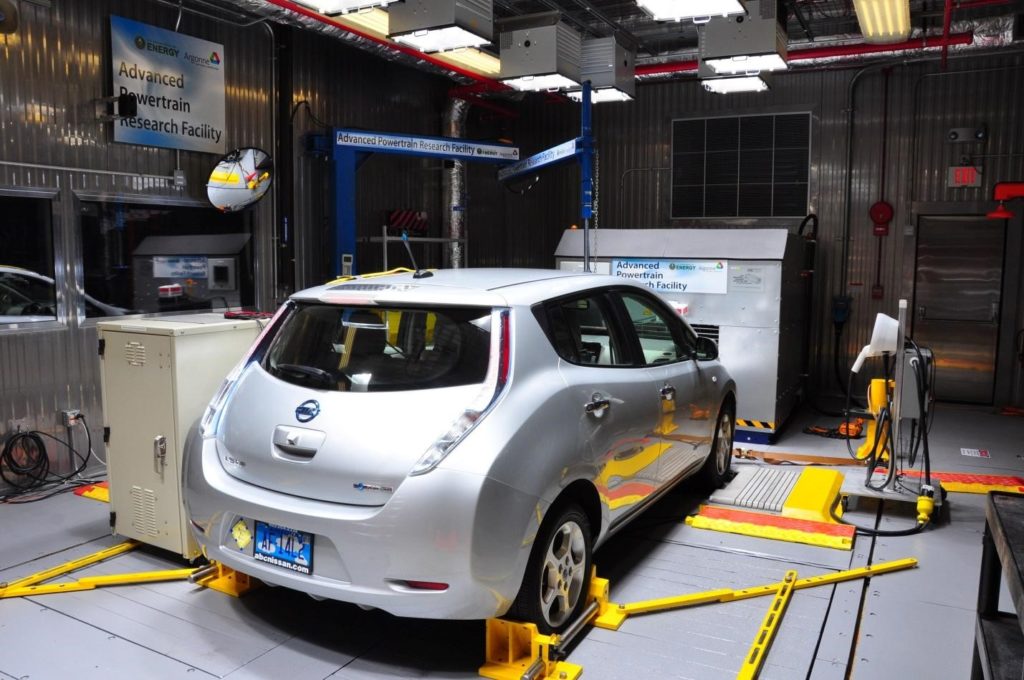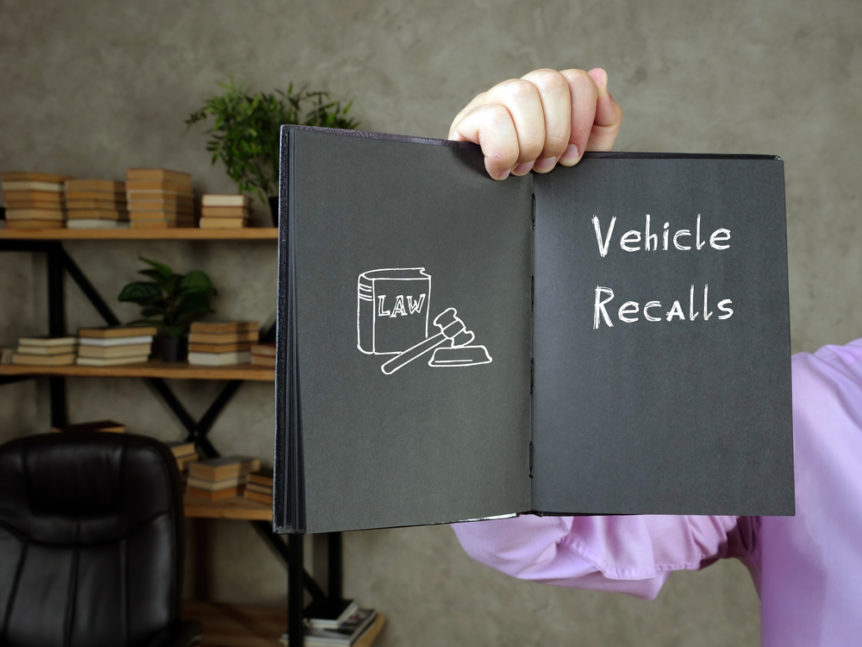According to Title 49 Chapter 301 of the United States Code, motor vehicle safety is defined as the performance of motor vehicles or vehicle equipment in a manner that safeguards the public against the unreasonable risk of accidents that may result in injury or death, stemming from a defect in their construction, design, or performance.
In the best-case scenario, car recalls are inconvenient. They force consumers to take time out of their busy schedules to get their cars repaired.
In the worst-case scenario, however, vehicle recalls mean that the cars have defective parts that may have contributed to an accident that resulted in severe injuries or fatalities.
If you are a car owner whose vehicle is part of a recall, there are several things you need to be aware of, including what your rights are in such cases. This article delves deep into everything you need to know about vehicle recall laws.
What Is a Vehicle Recall?
A vehicle recall is a process through which a vehicle manufacturer voluntarily recalls (or the National Highway Traffic Safety Administration (NHTSA) compels a manufacturer to recall) a vehicle because a particular aspect of its design has failed to meet the federal standards of safety. A recall could also be due to a safety-related manufacturing defect.
It’s important to mention that as daunting as manufacturer-initiated or NHTSA recalls may sound, it doesn’t always mean that the vehicle in question is unsafe to drive. It simply means that several owners of a particular car model have experienced a specific issue with it. Once the manufacturers become aware of it, they invite consumers to seek repairs on the car.
If there’s a recall issued on your vehicle, it doesn’t mean that the entire unit needs replacement. Only the defective part(s) will be fixed or replaced.
Just recently, Ford Motor Co. announced that it was recalling more than 85,000 2021 F-150s and 2020/2021 Super Duty trucks. The Ford recalls were the result of windshield defects. In the notice, the carmaker stated that the windshields for the affected vehicles might not be adequately bonded to the body of the truck, meaning they may not stay in place during an accident.
The Toyota recall of certain 2021 RAV4 Prime models is another example. The recall was issued due to defective headlight aiming caps that failed to comply with the Federal Motor Vehicle Safety Standards.
The defect allows for the horizontal adjustment of the headlight beam, which, in turn, increases glare and reduces visibility for oncoming drivers.

The Vehicle Recall Process
The first phase of a recall involves the discovery of a defective part on a motor vehicle. This then leads to one of two types of recalls – vehicle recalls by manufacturer or NHTSA recalls.
In some instances, the carmaker may discover a defect in one of its vehicle models and initiate a recall voluntarily. In other cases, consumers may encounter an issue in the vehicle and file a complaint with the dealership, manufacturer, or government regulator. Depending on the gravity of the defect and the number of reports received, a recall might be required if safety concerns are in question.
More often than not, a manufacturer will issue a voluntary recall on defective cars since it reflects better on the company than having to comply with a government-issued directive for a recall.
The NHTSA, the federal agency responsible for conducting motor vehicle safety investigations, will kick start the recall process by sending a request to the carmaker to recall a specific defective vehicle model. Alternatively, the NHTSA may bypass this method altogether and simply order the manufacturer to recall the defective cars or equipment.
When Is a Vehicle Recall Necessary?
The federal requirements for motor vehicle safety outline specific minimum performance standards for the parts of a car considered critical for its safe operation (such as brakes and tires). They also outline the minimum standards required to protect the vehicle occupants in the event of a crash (such as safety belts and airbags).
These safety requirements apply to all vehicles and vehicle equipment certified for use on public highways and roads, whether or not the vehicles are manufactured in the United States or imported for sale in the country. Any time a vehicle or piece of equipment fails to meet these safety standards, a recall becomes necessary.
Once a car is determined to have a particular defect, the manufacturer has three options under the provisions of vehicle recall laws.
- Repair: In this option, the carmaker fixes the defect at no cost to the consumer. This remedy usually applies to small defects that can be easily repaired.
- Replace: In this option, the carmaker replaces the defective vehicle at no cost to the consumer. This is usually the remedy when the issue cannot be fixed. The replacement vehicle has to be a similar model or identical to the original one.
- Refund: In this option, the manufacturer issues a refund for the purchase. The amount to be reimbursed takes into account the depreciation cost of the vehicle.
Keep in mind that these same remedies also apply to makers of car accessories such as child safety seats. Additionally, if you had already incurred some expenses for repairing an issue that is later the subject of a recall, you are entitled to a refund for the cost of service.
Types of Recalls
Recalls generally fall into one of two categories – safety-related recalls or non-safety-related recalls.
A safety-related recall is issued when there’s a problem with the motor vehicle or equipment that poses a safety risk to the car occupants or other road users. Such issues may apply to a specific group of vehicles from the same manufacturer.
Common examples of safety-related defects that may be potential causes of car accidents and/or injuries include:
- Faulty gas pedal
- Faulty braking system
- Defective tire or wheel that breaks or cracks resulting in the partial/complete loss of control of the vehicle
- Failure of critical vehicle components that may breakdown, separate, or break resulting in the partial/complete loss of control of the vehicle
- Failure of steering components that may result in the partial/complete loss of control of the vehicle
- Failure of seats or seat backs while the vehicle is in use
- Faulty windshield wiper assemblies that may result in the reduction or obstruction of the driver’s view
- Airbag issues such as failing to deploy properly
- Breakage of engine cooling fans that may pose a danger to the mechanics of the vehicle
- Issues with the wiring system that may result in the loss of lighting or a fire
Common examples of non-safety-related defects:
- Dysfunctional radios
- Excessive oil intake
- Faulty air conditioning components
- Frequent wear of braking mechanisms, exhaust systems, batteries, and shocks
- Leaky oil and fuel systems
- Poor paint quality, body panel rust, or other blemishes
Car Emissions Recalls

Aside from the safety-related and non-safety-related recalls listed above, the federal government requires motor vehicles to meet specific emission standards to preserve the environment and ensure that air pollution is kept at a minimum.
Therefore, vehicle manufacturers are required to design and assemble their cars in compliance with the existing federal emission standards. These are applicable throughout the lifetime of the vehicle.
The Clean Air Act gives the Environmental Protection Agency (EPA) the authority to compel manufacturers to recall their vehicles if they don’t comply with the federal emission guidelines.
Does My Vehicle Have a Recall – How to Check for Vehicle Recalls
Once a vehicle model is found to be defective, and the manufacturer begins the recall process, the affected consumers will usually receive a notice. The law requires carmakers to notify the registered owners of the affected vehicles and the buyers of recalled cars.
State agencies usually provide carmakers with lists of all the registered owners of the recalled vehicles to facilitate this process. The notice contains important information about the defect in question and how to go about getting the issue fixed.
Additionally, you could do a vehicle recall check on the NHTSA safety issues and recalls database to find out if your car has a recall on it.
All you have to do is enter its 17-character Vehicle Identification Number (VIN) in the database to find out if it needs repair as part of a recall. The VIN is located on the lower left part of your car’s windshield. You can also check for it on your vehicle’s registration card or insurance card.
Do Vehicle Recalls Expire?
While a vehicle recall does not technically have an expiration date, carmakers are only required to provide a free remedy to defective cars that are not more than 15 years old.
According to the NHTSA, car owners are only eligible for a free remedy if the vehicle with the recall is no more than 15 years old at the date when the non-compliance or defect is first established.
However, keep in mind that under the provisions of this law, the “age” of the car is calculated from the date the original sale was made when it was brand new. Any repair on a recalled vehicle that’s older than 15 years is done at the owner’s sole expense.
Car Recalls and Lawsuits – What Are Your Rights?
While a car recall requires manufacturers to issue consumers with a free remedy, the remedy in question does not cover any injuries or damages you may have sustained as a result of the defect. Nonetheless, federal laws give you the right to file a defective product lawsuit against the carmaker.
This means that a victim involved in a car accident due to an auto-related defect has a legal claim to damages and can recover monetary compensation for medical bills, lost wages, and any other relevant damages.
Federal laws are tough when it comes to such matters. They hold carmakers to a high standard of care when it comes to ensuring that the vehicles and equipment they manufacture do not endanger the lives of passengers and other road users.
Nonetheless, for your claim to hold up in court, you’ll need to show that you were using the vehicle in a manner that the manufacturer intended. The burden of proof rests on you demonstrating that the carmaker acted negligently or made an error during the car’s production.
Proving Negligence
A product liability lawsuit would require you to prove that:
- The vehicle manufacturer had an obligation to manufacture a vehicle that was safe for use;
- The manufacturer failed in this obligation by designing or manufacturing a defective vehicle;
- The accident in question was the direct result of the vehicle defect;
- The accident resulted in physical injuries, permanent disability/disfigurement, lost wages from missed days from work, medical expenses, psychological injuries, and any other kind of harm.
If your car was defective when you first bought it, and you ended up sustaining injuries while using it, you’ll need to get in touch with a defective product lawyer to explore all the options for legal recourse available to you.
For instance, if a defective tire or faulty brake pads caused you to lose control of your vehicle, resulting in injuries, you can seek damages in a civil lawsuit, in addition to the manufacturer recall remedies you’re entitled to.
Talk to an Experienced Attorney
Once you become aware of a vehicle recall on your car, you should not drive it. Driving your vehicle after you’ve been informed of a defect and subsequently getting involved in an accident may hold you partially liable for the resulting damages. You may not recover the maximum compensation you’re entitled to in a product liability suit against the vehicle manufacturer, even if the car defect was the direct cause of the crash.
Regardless of the specific circumstances surrounding your accident, get in touch with a defective product lawyer as soon as possible to explore the various avenues through which you can sue for damages.
Do you have any legal questions for us? Chat online with a Laws101 attorney right now.
